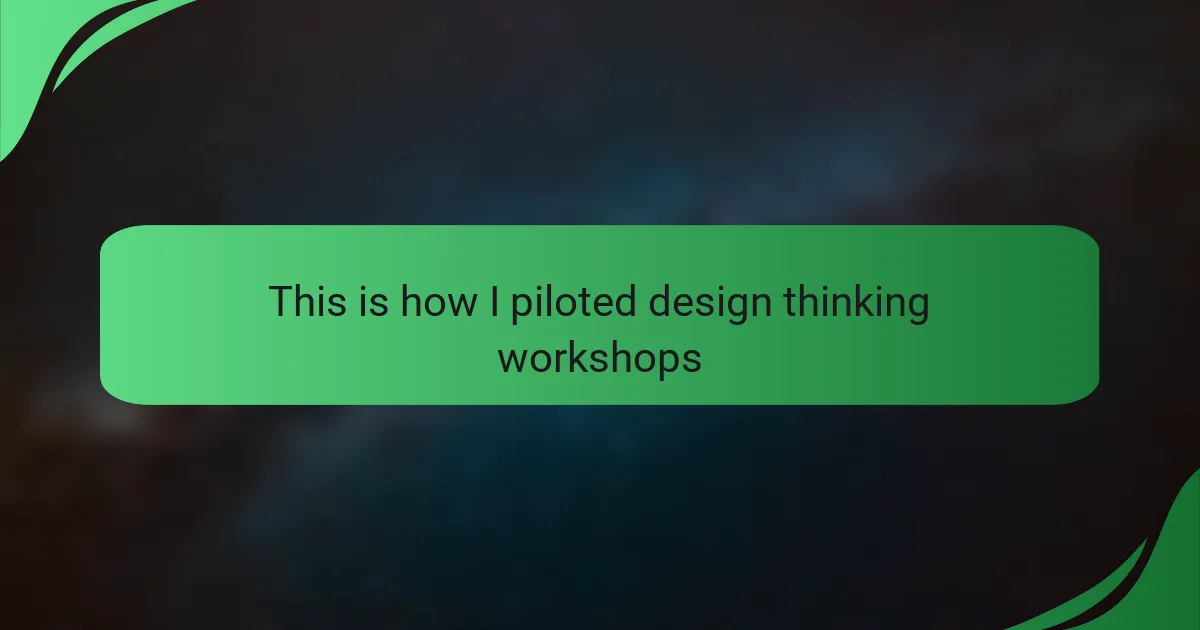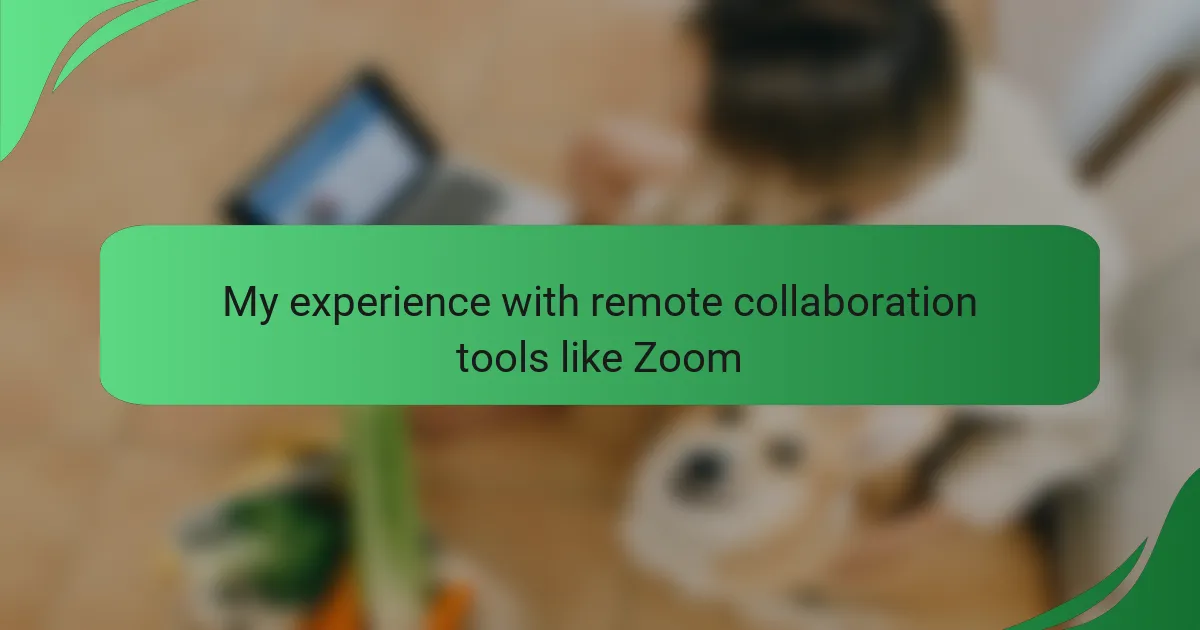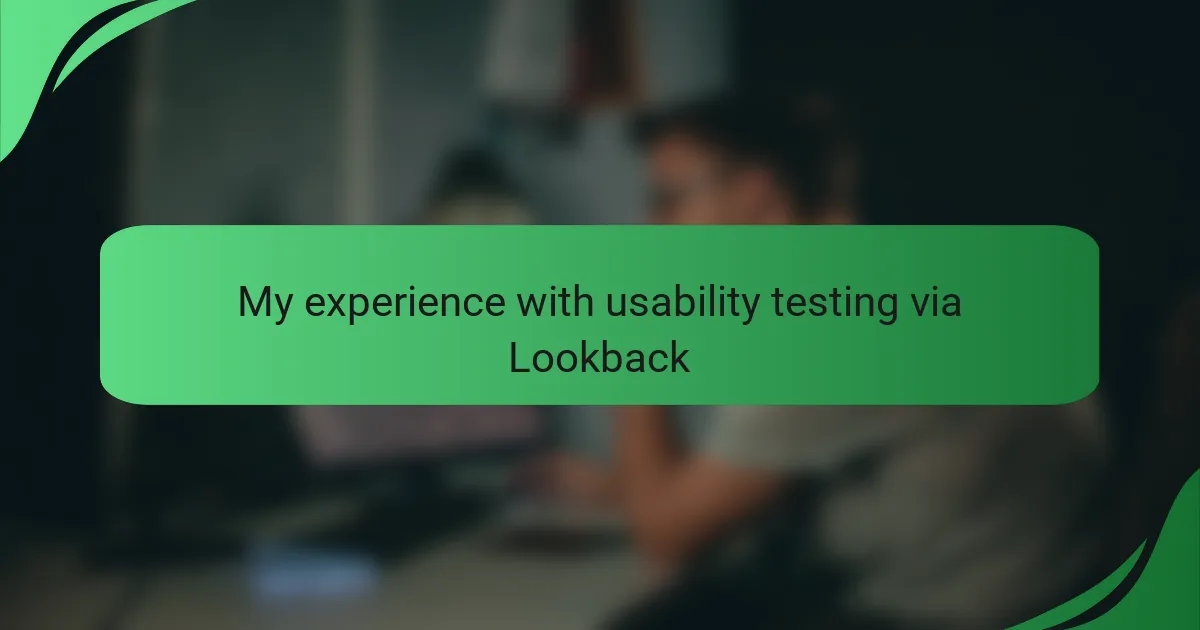Key takeaways
- Effective interface interaction design requires a user-centric focus, ensuring designs are intuitive, accessible, and consistent.
- Design thinking workshops promote innovation through empathy, collaboration, and iterative feedback, leading to richer ideas and solutions.
- Creating a safe and engaging environment encourages participation and creativity, helping quieter voices contribute meaningful insights.
- Key lessons from workshops include the importance of diverse teams, celebrating small wins, and effective time management for balanced exploration and refinement.
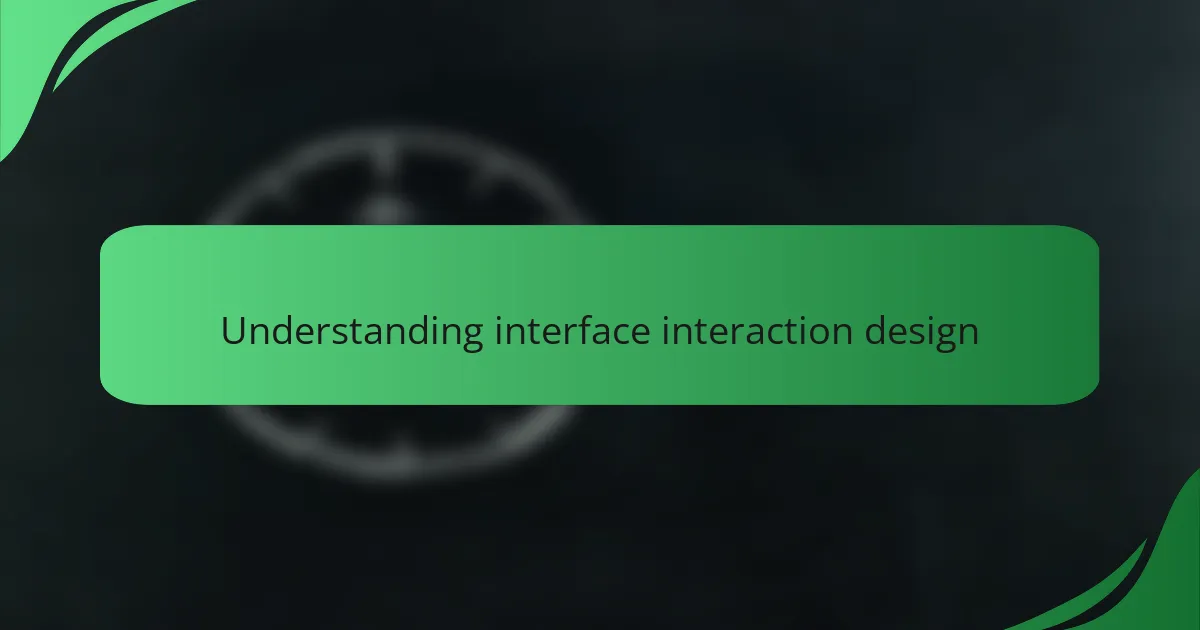
Understanding interface interaction design
Understanding interface interaction design requires a deep dive into how users engage with digital environments. From my experience, effective design isn’t just about aesthetics; it’s about creating seamless experiences that resonate with users. I’ve noticed that when designers prioritize user feedback, the end product inevitably feels more intuitive and functional.
When I first started in interface interaction design, I struggled to balance creativity with practicality. However, through trial and error, I learned some crucial elements that can guide effective design approaches:
- User-Centric Focus: Understanding the needs and behaviors of users is paramount.
- Consistency: Create a uniform experience across different pathways to reduce confusion.
- Accessibility: Ensure that designs are usable for individuals with different abilities.
- Feedback Mechanisms: Incorporate ways for users to give feedback and feel heard.
- Iterative Process: Embrace feedback and be willing to make changes throughout the design process.
Reflecting on these key areas has helped me cultivate a more empathetic approach to design, ultimately enhancing user interactions.
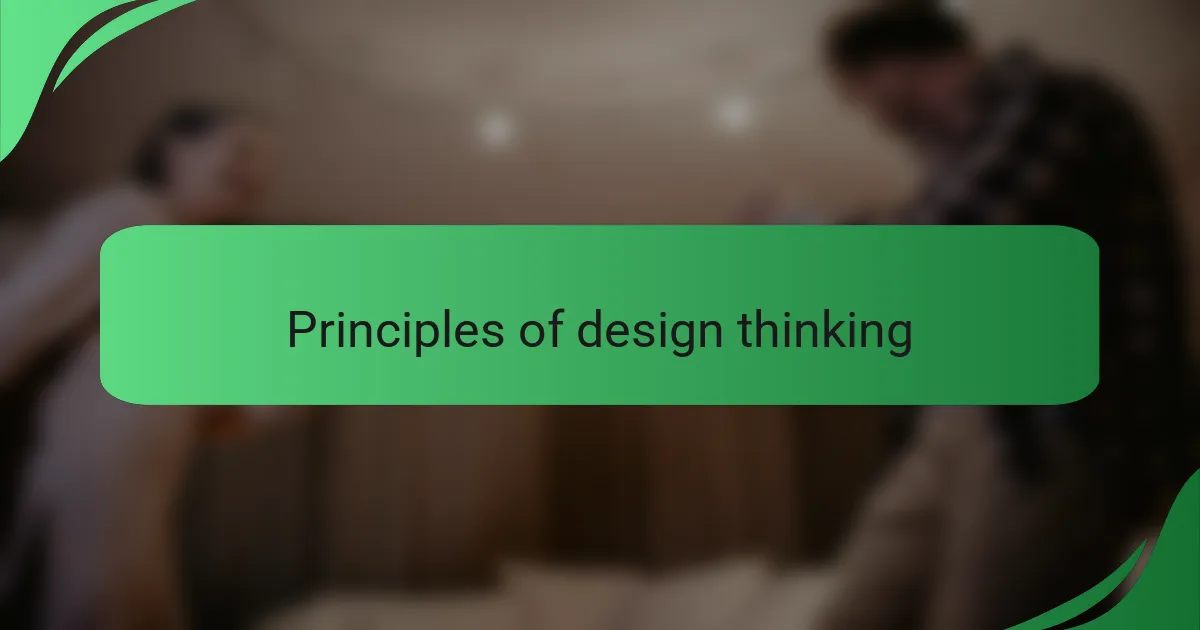
Principles of design thinking
Design thinking is rooted in empathy, which I’ve found to be the cornerstone of any successful workshop. It encourages participants to deeply understand the user’s experience, fostering insights that lead to innovative solutions. I remember a workshop where we spent an entire afternoon role-playing as users, and the breakthrough ideas that emerged were illuminating; it was a vivid reminder of how aligning with the users’ needs can transform our approach to design.
Another key principle is iteration. In my experience, the best ideas rarely come from the first draft. During one workshop, we embraced the idea of rapid prototyping, creating multiple versions of a solution within hours. This approach not only sparked creativity but also revealed unforeseen issues early on, enabling us to refine our designs based on genuine feedback.
- Empathy: Understanding users’ needs and experiences.
- Ideation: Generating a wide range of ideas without judgment.
- Iteration: Continuously refining solutions based on feedback.
- Collaboration: Engaging diverse perspectives to enhance creativity.
- Prototyping: Creating tangible representations of ideas for testing and feedback.
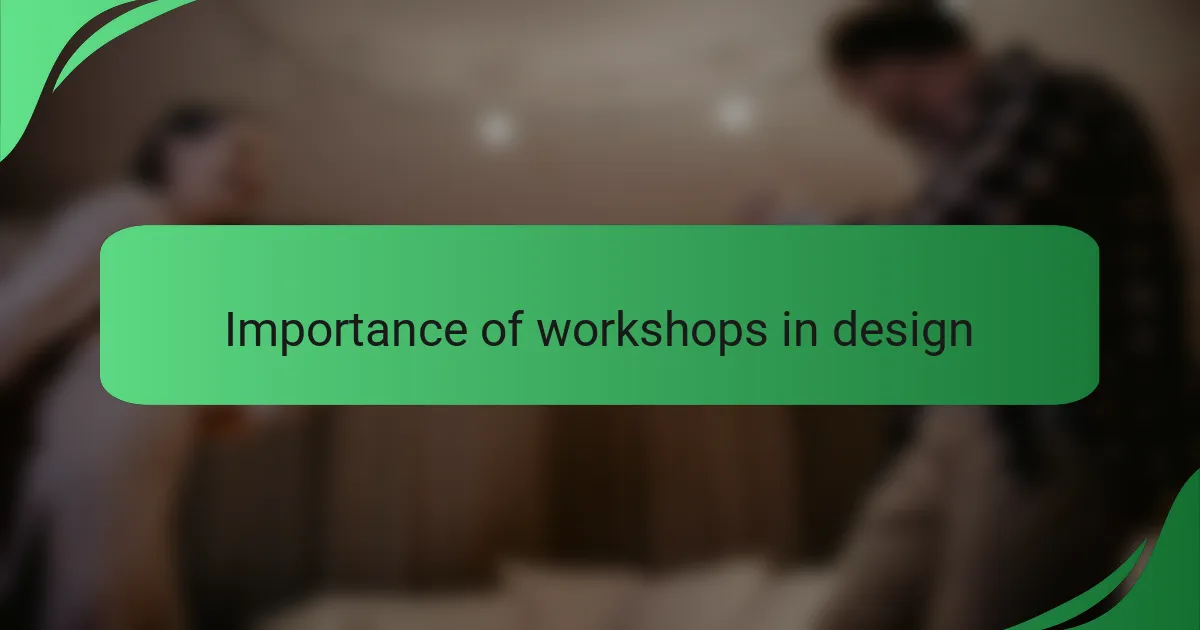
Importance of workshops in design
Workshops play a pivotal role in the design process. During my time facilitating design-thinking workshops, I witnessed firsthand how they foster collaboration and spark creativity. There’s something truly magical about bringing diverse minds together; different perspectives can lead to unexpected insights that transform the direction of a project.
Not only do these workshops nurture innovation, but they also build stronger team dynamics. Reflecting on my experiences, I recall moments when a quiet participant shared a breakthrough idea that shifted our entire focus. The energy in the room can change instantly, igniting a sense of ownership and shared purpose that drives results.
- Encourages collaboration among team members.
- Helps generate a wide range of ideas quickly.
- Fosters a culture of innovation and open-mindedness.
- Strengthens relationships and builds trust within teams.
- Provides a structured environment for problem-solving.
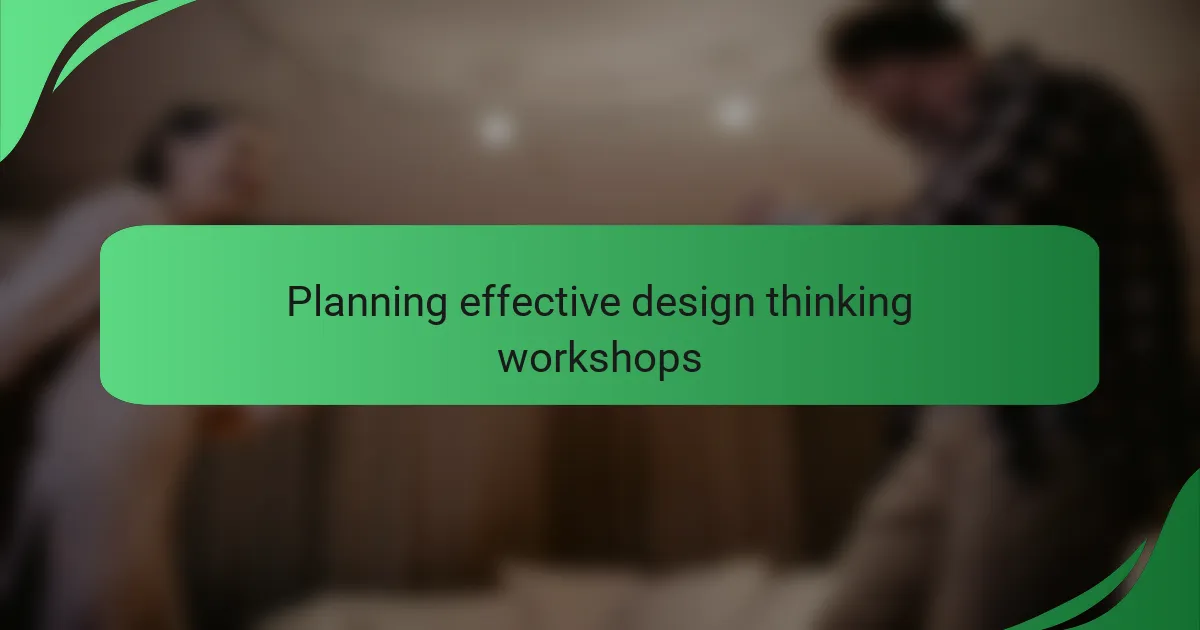
Planning effective design thinking workshops
Planning effective design thinking workshops requires a thoughtful approach to ensure that participants are engaged and empowered to contribute. In my experience, I found that setting clear objectives at the outset is crucial. If everyone understands the goals, it creates a shared sense of purpose and drives momentum throughout the session.
When it comes to logistics, the environment matters just as much as the content. I once held a workshop in a cozy, well-lit space, and not only did participants feel more relaxed, but their creativity flowed effortlessly. Here are some key aspects to consider for a successful workshop:
- Define clear objectives and outcomes to guide the session.
- Select an inspiring and comfortable location to foster creativity.
- Involve diverse participants to bring different perspectives and ideas.
- Prepare engaging activities that encourage collaboration and innovation.
- Allow time for reflection and discussion, as these moments often lead to unexpected insights.

Techniques for engaging participants
Creating an engaging atmosphere in design thinking workshops truly makes a difference in participant involvement. From my experience, incorporating icebreaker activities at the start not only warms up the group but also establishes a sense of comfort. I remember kicking off a session with a fun team-building game that sparked laughter and eased any initial tension, setting a positive tone for the rest of the day. Isn’t it amazing how a little humor can pave the way for serious creativity?
Another technique I’ve found effective is using visual aids and interactive tools. When I included sketching sessions where participants could visualize their ideas, the energy in the room shifted dramatically. It’s fascinating how drawing concepts can make abstract ideas more tangible, stimulating discussions that lead to innovative solutions. Have you ever noticed that when people can literally see their thoughts, their engagement skyrockets?
Encouraging open dialogue is crucial as well. During a recent workshop, I implemented roundtable discussions where every voice was valued. I was struck by how this format allowed quieter participants to share their insights, which often turned out to be some of the most profound ideas. The beauty of collaboration lies in the diversity of thought, and I’ve learned that cultivating an environment where everyone feels empowered to speak up is key to unlocking true creativity.
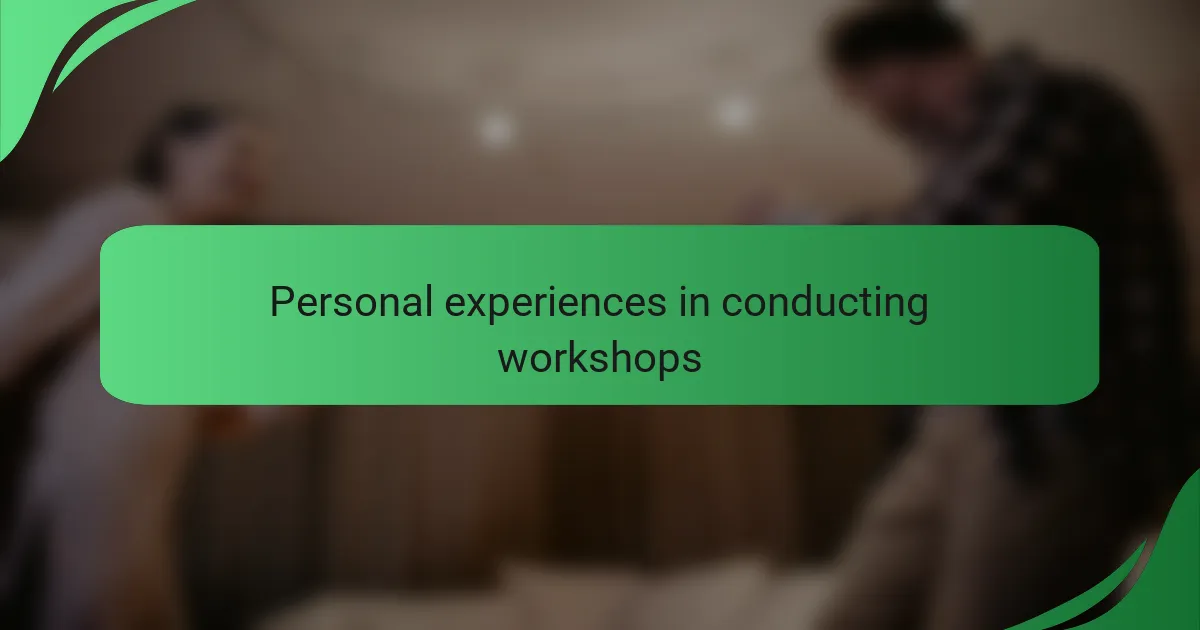
Personal experiences in conducting workshops
Conducting design thinking workshops has been both a challenge and a rewarding experience for me. I remember one workshop where participants were hesitant at first, caught up in their own ideas and preconceived notions. However, as we moved through the stages of empathy and ideation, I could sense their energy shift—an electric feeling of collaboration that made all the hard work worth it.
I’ve learned that creating a safe space is crucial for creativity to thrive. There was one particular session where we used storytelling to break the ice; it opened the floodgates of creativity. Participants who were initially quiet became the most enthusiastic contributors. It’s a reminder for me that the right environment can drastically enhance interaction and innovation.
In my experience, structuring the workshop around real-world problems tied to users’ needs significantly boosts engagement. When participants can relate directly to the challenges we are addressing, the outcome is often richer and more impactful.
| Factor | Personal Experience |
|---|---|
| Creating a Safe Space | Fosters openness and creativity; crucial for engagement. |
| Using Storytelling | Helps break the ice; transforms quiet participants into enthusiastic contributors. |
| Real-World Problems | Drives relevance; enhances participant commitment and innovative solutions. |
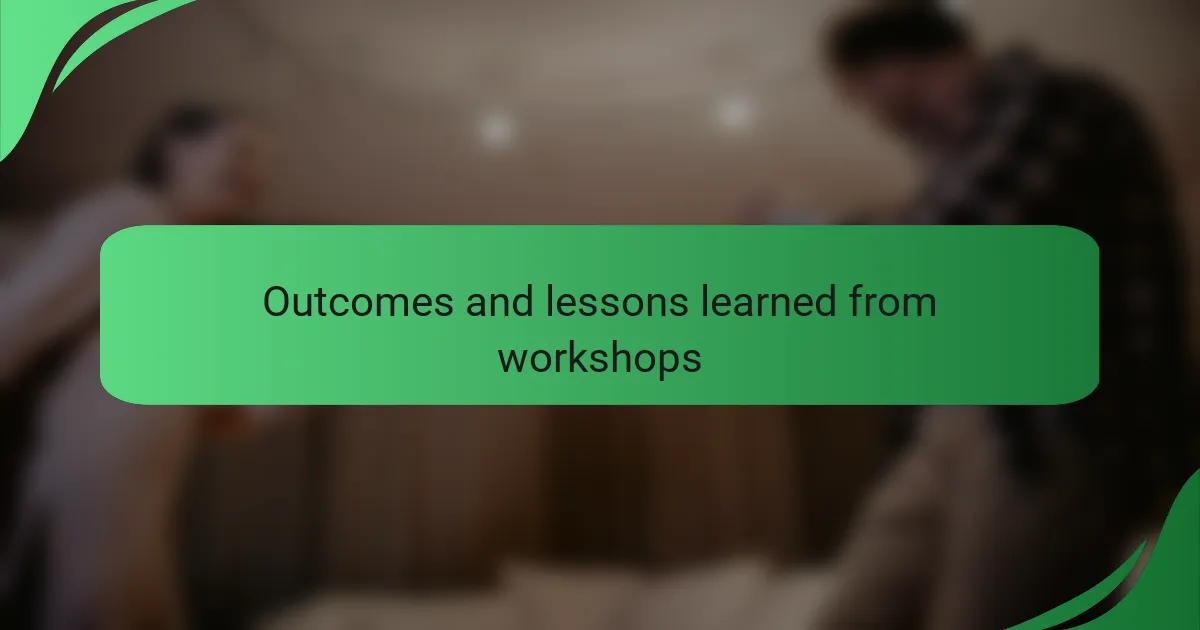
Outcomes and lessons learned from workshops
The outcomes of the design thinking workshops I facilitated were incredibly rewarding. Participants often left with a renewed sense of creativity and collaboration, which is vital in the field of interface interaction design. I remember one workshop where a team that had struggled with communication emerged with an innovative prototype that combined their diverse perspectives. Witnessing that transformation was profoundly fulfilling.
From these experiences, I gleaned some valuable lessons that I believe can enhance future workshops:
- Iterative Feedback is Key: Encouraging participants to provide constructive feedback throughout the process leads to richer ideas.
- Diverse Teams Foster Innovation: Mixing skills and backgrounds creates a more dynamic environment and helps generate unexpected solutions.
- Empathy Empowers: Building empathy for end-users consistently elevates the design process and leads to more user-centered outcomes.
- Celebrate Small Wins: Recognizing progress, no matter how small, keeps motivation high and the momentum alive.
- Time Management is Crucial: Balancing time for exploration and refinement ensures that ideas are both innovative and practical.
Incorporating these lessons has shaped my approach and continues to refine the experience for all involved.
